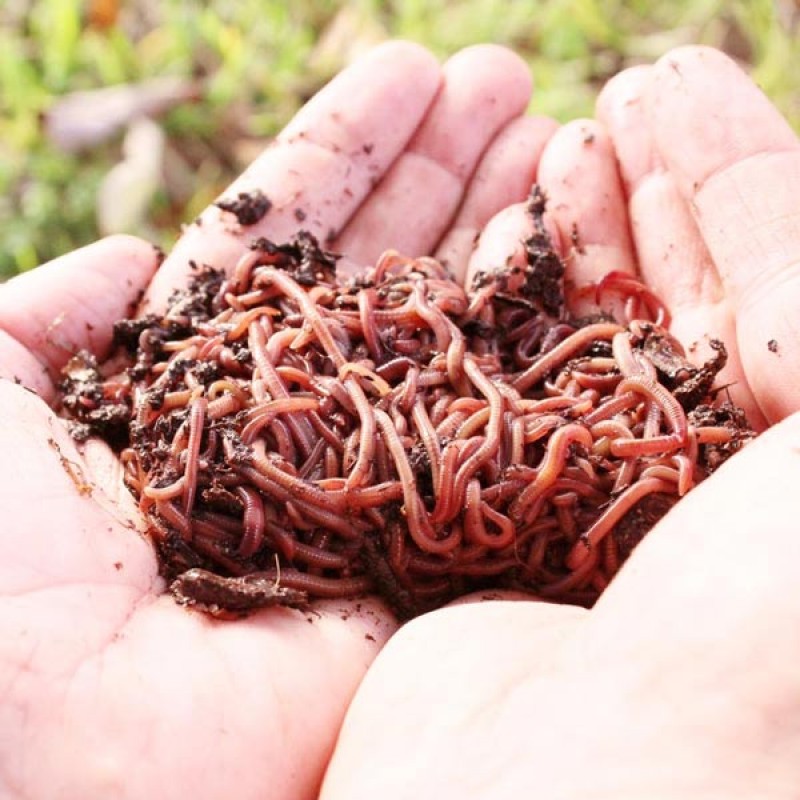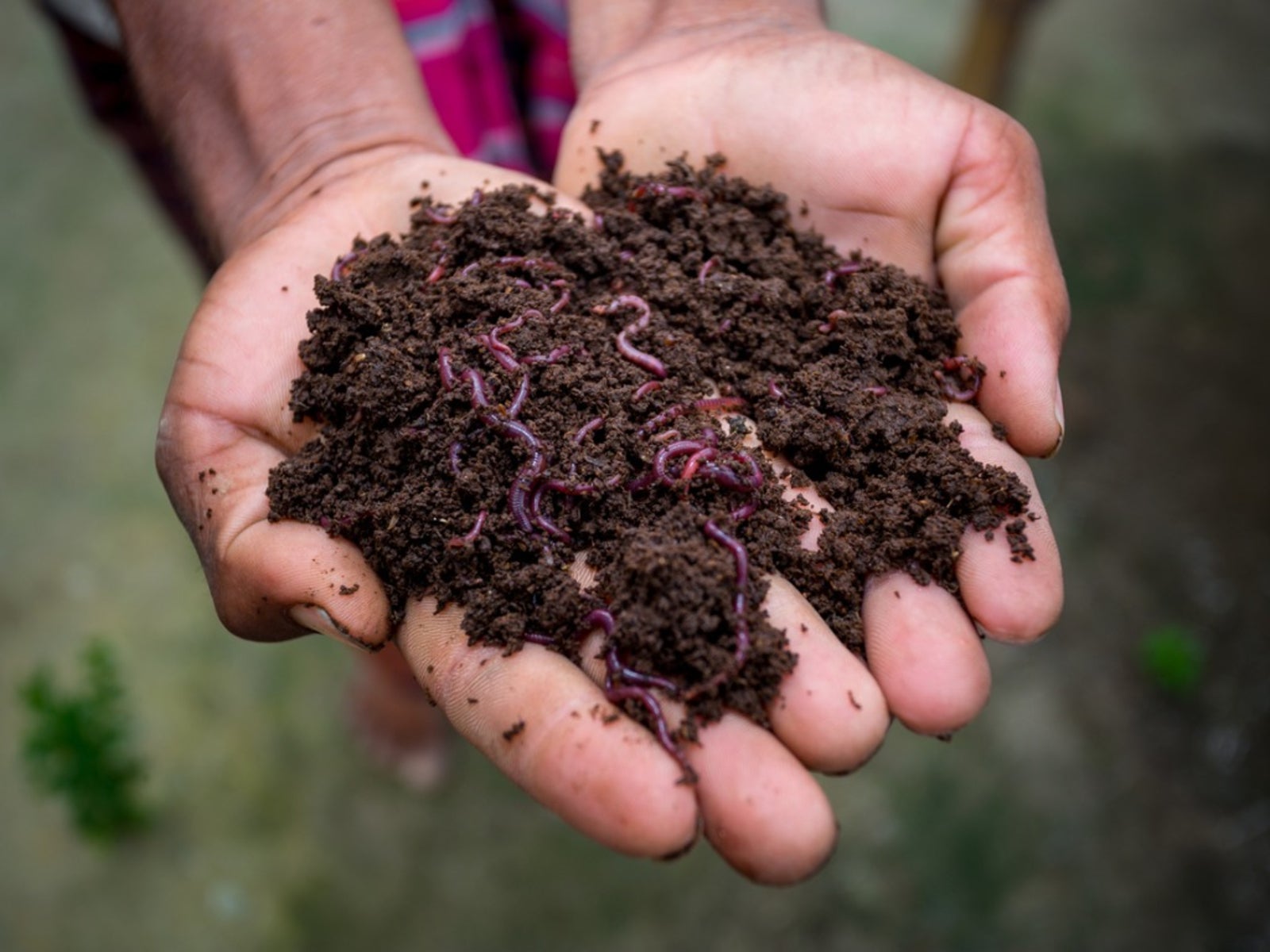Checking Out the Mechanisms of Red Wiggler Composting: A Comprehensive Overview to the Refine and Its Favorable Influence On Sustainable Horticulture Practices
The intricate systems of red wiggler composting, making use of the unique physiology of Eisenia fetida, provide a compelling method for boosting sustainable horticulture techniques. This process not just changes organic waste into nutrient-dense vermicompost but also promotes a much healthier dirt environment with enhanced aeration and microbial task. As city gardening gains grip, understanding the nuances of this composting method ends up being increasingly appropriate. Nonetheless, the journey into its myriad benefits and finest methods is just starting, motivating a better assessment of exactly how this strategy can reshape our gardening techniques.
Comprehending Red Wigglers
Red wigglers, scientifically called Eisenia fetida, are a types of earthworm extremely concerned for their effectiveness in composting natural waste. These worms prosper in nutrient-rich environments, especially in rotting raw material, making them perfect for vermicomposting systems - Red Wiggler Composting. Characterized by their reddish-brown pigmentation and segmented bodies, red wigglers are smaller than typical earthworms, usually determining in between 3 to four inches in length
Their unique physiological traits enhance their composting abilities; as an example, they have a high reproductive rate, permitting populations to increase quickly under ideal conditions. Red wigglers take in organic material, damaging it down through their gastrointestinal systems, which causes nutrient-rich castings that work as a superb organic plant food. Their voracious hunger allows them to refine big quantities of food waste efficiently, substantially minimizing land fill payments.
Along with their composting expertise, red wigglers play a vital duty in dirt health and wellness. Red Wiggler Composting. They freshen the soil and assist in the decay of raw material, additional enriching the soil environment. Understanding the characteristics and environmental advantages of red wigglers is important for any individual seeking to apply sustainable horticulture practices with effective composting methods
The Composting Refine
The composting process includes damaging down organic products into nutrient-rich compost, a job that red wigglers succeed at as a result of their specialized digestive system systems. These worms consume food scraps, yard waste, and other organic matter, changing them into useful compost through a series of chemical and organic processes.
Initially, the raw material is mixed with bed linen products such as shredded paper or dried fallen leaves, developing an optimal environment for the worms. As the red wigglers ingest this mix, they simplify through their intestine, where microorganisms better decompose the product. This procedure creates warmth, advertising microbial task, which increases decay.
Advantages of Red Wiggler Composting
Lots of gardeners and eco-conscious individuals recognize the various benefits of red wiggler composting, making it a popular selection for effective waste management. One of the primary advantages is its capability to substantially reduce organic waste in garbage dumps - Red Wiggler Composting. Red wigglers effectively damage down cooking area scraps and various other biodegradable materials, changing them right into nutrient-rich vermicompost that enriches dirt health
Moreover, red wiggler composting enhances soil framework and fertility. The resulting vermicompost is including advantageous bacteria, which promote plant growth and enhance nutrient retention. This natural plant food not only sustains lasting horticulture techniques but additionally minimizes dependence on chemical plant foods, cultivating a much healthier community.
In addition, red wiggler composting is a space-efficient technique, making it optimal for metropolitan garden enthusiasts with limited space. The process can be conducted inside or outdoors, permitting year-round composting no matter environment problems. In addition, red wigglers are low-maintenance microorganisms that require minimal care, making them accessible for novice gardeners.
Fundamentally, the benefits of red wiggler composting prolong past waste decrease; they add to healthier dirts, sustainable gardening practices, and environmental stewardship, positioning it as a beneficial practice in modern horticulture.
Best Practices for Composting
For effective red wiggler composting, adhering to best methods is crucial to take full advantage of efficiency and make certain an effective environment for these worms. This balance advertises ideal decomposition and enhances the worms' wellness.
Following, monitor dampness levels, going for a wet, sponge-like uniformity. Overly damp conditions can result in anaerobic decomposition, while too much see page dryness may hinder worm activity. Furthermore, guarantee appropriate aeration by transforming the garden compost on a regular basis, which assists prevent compaction and permits sufficient oxygen circulation.
Temperature is an additional vital factor. Preserve a variety of 55 ° F to 77 ° F(13 ° C to 25 ° C) to promote worm activity and microbial growth. Finally, stay clear of presenting meat, dairy, and oily foods, as these can attract pests and develop smells.
Enhancing Lasting Horticulture
Lasting gardening symbolizes an all natural approach that balances eco-friendly principles with functional gardening methods. By incorporating approaches such as red wiggler composting, garden enthusiasts can dramatically enhance their practices, cultivating a more durable community. Red wigglers, renowned for their effective decay capacities, transform organic waste into nutrient-rich garden compost, thus improving the soil Check Out Your URL without depending on chemical plant foods.
Carrying out sustainable gardening strategies, such as plant turning, friend planting, and mulching, additional complements the benefits of composting. These practices not only boost dirt structure and fertility yet likewise promote biodiversity, bring in valuable pests and microorganisms that add to plant wellness. Using native plants can minimize water intake and lessen maintenance, aligning with water conservation initiatives.

Verdict
In verdict, red wiggler composting stands for a vital method for boosting lasting gardening techniques. Ultimately, the adoption of red wiggler composting can considerably add to environmentally friendly gardening, profiting both city and newbie garden enthusiasts in their growing initiatives.
The elaborate systems of red wiggler composting, utilizing the unique physiology of Eisenia fetida, offer an engaging method for boosting lasting gardening methods. Comprehending the qualities and environmental benefits of red wigglers is necessary for anyone looking to implement lasting horticulture methods with efficient composting approaches.

In final thought, red wiggler composting stands for an important technique for boosting lasting gardening methods. Inevitably, the fostering of red wiggler composting can considerably contribute to environmentally friendly gardening, profiting both urban and site web amateur gardeners in their cultivation initiatives.
Comments on “Red Wiggler Composting: How to Start and Keep an Efficient Worm Bin”